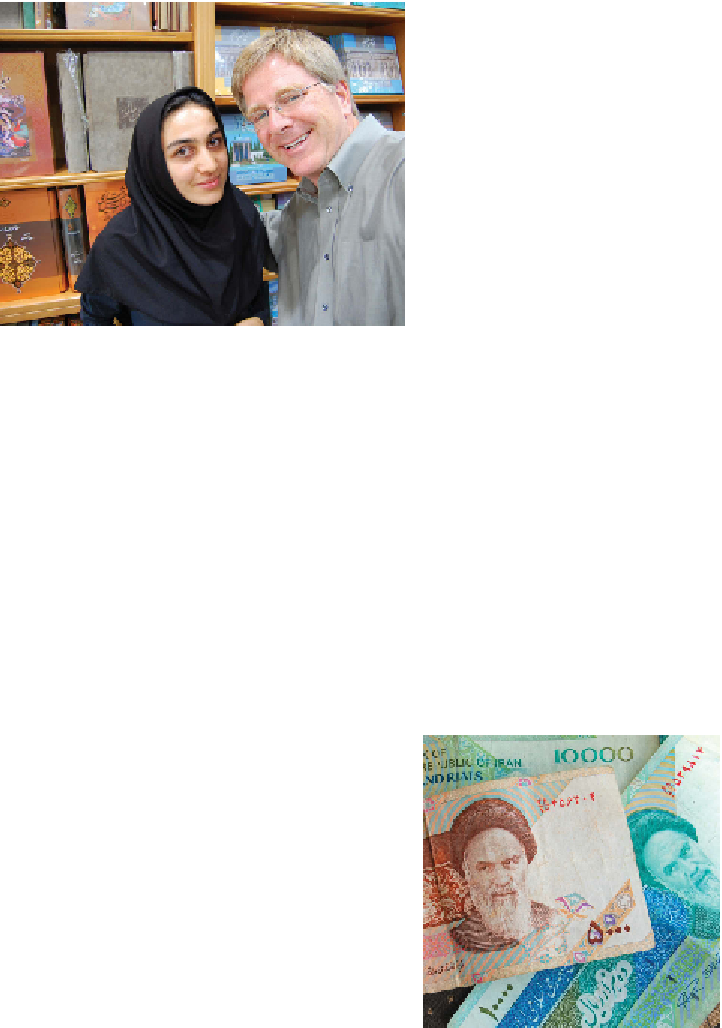Travel Reference
In-Depth Information
h e squiggly local script looked
like Arabic to me, but I learned that,
like the language, it's Farsi. h e num-
bers, however, are the same as those
used in the Arab world. h ankfully,
when I needed it, I found that they
also use the same numbers we do.
Iran is a cash society. Because
of the three-decade-old American
embargo here, Western credit cards
didn't work. No ATMs for foreigners
meant that I had to bring in big wads
of cash...and learn to count carefully.
h e money came with lots of zeros.
One dollar was equal to 10,000
rial
.
A
toman
is
ten
rial,
and some prices are listed in
rial,
others in
toman
...a
tourist rip-of just waiting to happen. I had a shirt laundered at the hotel for
“20,000.” Was that in
rial
($2)—or in
toman
($20)?
People in Iran need to keep track of three dif erent calendars: Persian
(for local af airs), Islamic (for religious af airs), and Western (for dealing
with the outside world). What's the year? It depends: After the great Persian
empire—some 2,500 years ago; after Muhammad—about 1,390 years ago;
or after Christ—just over 2,000 years ago.
Of course, the Islamic govern-
ment legislates women's dress and
public behavior (we'll get to that
later). Men are also af ected, to a lesser
degree. Neckties are rarely seen, as
they're considered the mark of a Shah
supporter. And there seem to be no
urinals anywhere. (I did an exten-
sive search—at the airport, swanky
hotels, the university, the fanciest
cof ee shops—and never saw one.)
I was told that Muslims believe you
don't get rid of all your urine when
you urinate standing up. For religious
In a bookstore, a woman patiently showed
me fi ne poetry books. As we left, she gave
me a book for free.
While Washington made it on our one-
dollar bill, Khomeini made it on every
denomination in Iran.

















































































